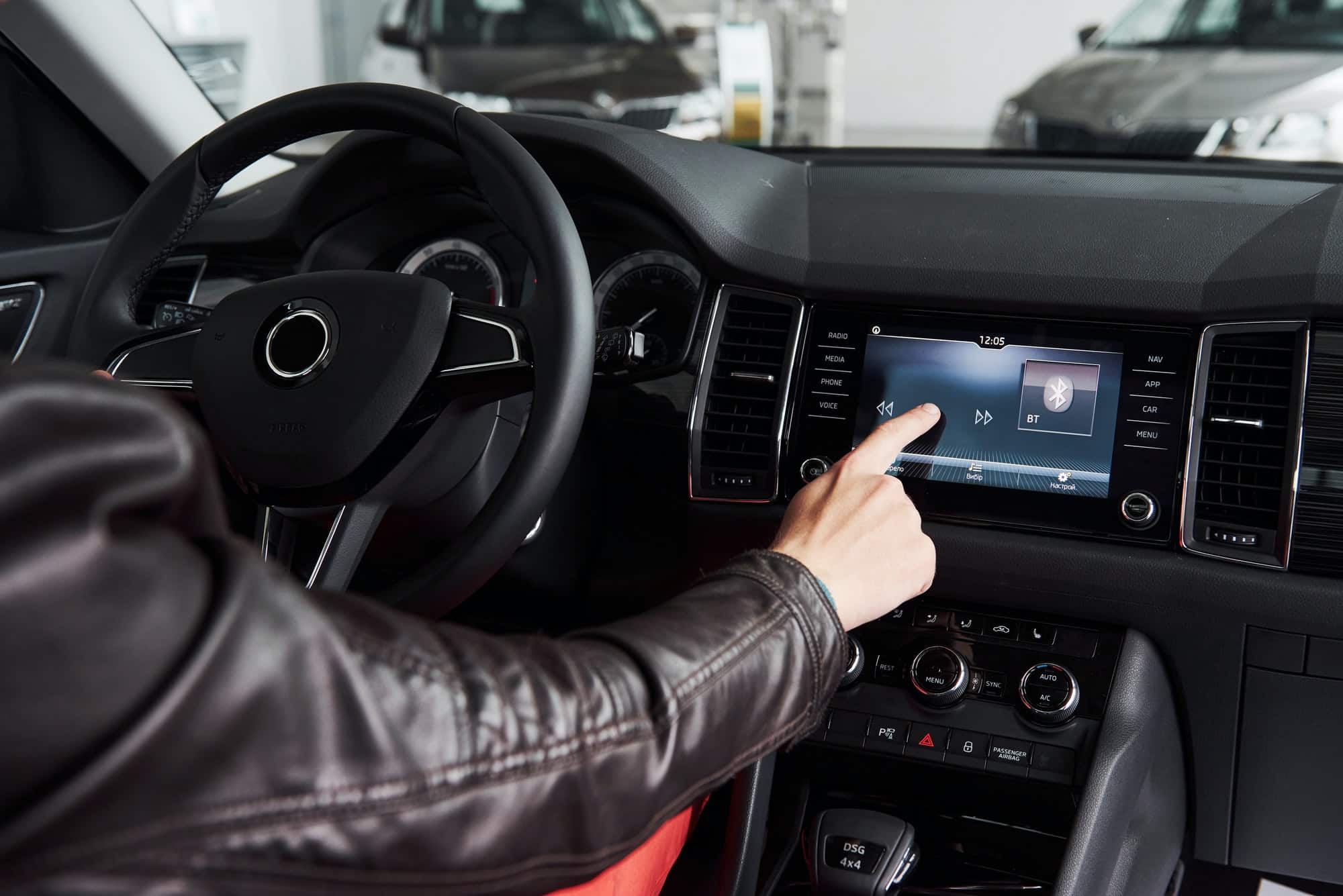What Advances Are There in IoT for Personal Vehicle Diagnostics?

In today’s era of rapid technological progression, the Internet of Things (IoT) is leading the charge in the automotive industry. With the integration of IoT technology and telematics, vehicles have transformed into intricate systems of sensors and devices that enhance safety, improve maintenance, and provide real-time data management. From personal cars to fleet vehicles, IoT advancements are revolutionizing vehicle diagnostics, offering unprecedented connectivity, and ushering in a new age of vehicle technology.
The Integration of IoT in Vehicle Diagnostics
The advent of IoT in vehicle diagnostics presents a paradigm shift in the automotive industry. Real-time data management and monitoring have become integral aspects, thanks to IoT systems and devices. This technology harnesses the power of sensors, telematics, and connected devices to monitor vehicles’ condition and performance in real-time, enabling efficient maintenance and enhancing overall safety.
Sujet a lire : What Is the Potential of IoT in Customizing Home Lighting Systems?
IoT-based vehicle diagnostics primarily involve the use of telematics devices. These devices, equipped with sensors, collect data about vehicle performance and transmit it to centralized systems for analysis. Furthermore, these devices can identify potential issues and alert the driver or fleet manager in real-time, allowing for preventative maintenance.
The data collected from the vehicles can include engine temperature, brake wear, tire pressure, fuel consumption, and more. IoT devices can even monitor driver behavior, such as driving speed and braking habits, to offer insights into safety and efficiency. This extensive, real-time data collection and management present opportunities for enhanced safety and more efficient vehicle maintenance.
Avez-vous vu cela : How Can IoT Devices Transform Personal Finance Management?
IoT and Enhanced Vehicle Safety
The safety of drivers and passengers is paramount in the automotive industry. IoT technology plays a pivotal role in enhancing vehicle safety, offering real-time data monitoring, diagnostics, and predictive analytics.
One of the most critical aspects of IoT in vehicle safety is the ability to provide real-time alerts. Sensors and connected devices can detect malfunctions in the vehicle and send immediate alerts to the driver or the fleet manager. This function allows for prompt action, potentially averting accidents due to vehicle malfunctions.
Moreover, IoT devices can monitor driver behavior, offering insights into driving style and habits. By analyzing this data, fleet managers can provide feedback to drivers, promoting safer driving habits.
Coupled with advancements in artificial intelligence, IoT technology can predict possible issues before they occur. For example, predictive analytics can identify patterns in data to forecast potential mechanical issues, allowing for preventative maintenance and reducing the chance of sudden malfunctions.
Transforming Fleet Management with IoT
In the realm of fleet management, IoT has brought about transformative changes. Fleet managers can leverage IoT technology to monitor and manage their vehicles, improving efficiency and reducing operational costs.
IoT enables real-time tracking of fleet vehicles, offering managers valuable insights into vehicle location, driver behavior, and fuel usage. This data can be used to optimize routes, manage fuel consumption, and ensure the safety of the fleet.
Moreover, the ability to monitor vehicle health in real-time allows managers to schedule regular maintenance, reducing the risk of unexpected breakdowns and prolonging the life of the vehicles.
Additionally, IoT devices can be used to automate tasks such as logging driver hours and vehicle inspections, reducing administrative work and allowing managers to focus on strategic decision-making.
IoT and the Future of Personal Cars
For personal cars, IoT is not a distant future technology but a present reality. Today’s cars are becoming increasingly connected, offering drivers unprecedented control and insight into their vehicle’s performance.
Connected cars equipped with IoT devices not only provide real-time diagnostics but also offer personalized driving experiences. For instance, cars can now learn and adapt to the driving habits of their owners, adjust seat positions, climate control settings, and even suggest personalized routes based on drivers’ histories.
Furthermore, IoT technology can provide drivers with real-time traffic updates, suggest alternate routes, and offer emergency assistance in case of an accident. These features not only enhance the driving experience but also significantly improve safety on the roads.
While these advancements are impressive, the future of IoT in personal cars promises even more. With the advent of autonomous vehicles, IoT will play a key role in ensuring these self-driving cars can navigate safely and efficiently.
The Role of IoT in Vehicle Maintenance
Maintenance is a critical aspect of vehicle ownership, influencing both the lifespan and performance of a vehicle. Traditional maintenance methods rely on manual inspection and routine check-ups. IoT, however, introduces a more proactive approach to maintenance.
With real-time data from sensors and connected devices, IoT systems can identify potential issues early and alert the owner or the fleet manager. This enables preventative maintenance, saving time and reducing costly repairs.
Moreover, IoT can provide a comprehensive view of a vehicle’s condition, making it easier to manage and plan maintenance. With the help of IoT, vehicle owners can keep their cars in optimal condition, prolonging their lifespan and maintaining their performance.
Despite these advancements, the integration of IoT in vehicle diagnostics is still in its early stages. As technology continues to evolve, we can expect to see even more sophisticated IoT systems in our vehicles, enhancing safety, improving maintenance, and revolutionizing the way we drive. The potential of IoT in the automotive industry is immense, and the future certainly looks promising.
IoT in Emergency Situations
One of the greatest advancements of IoT in vehicle diagnostics is its application in emergency situations. With the use of real-time data, IoT devices can sense when an accident has occurred and automatically notify emergency services, saving precious time that might be otherwise lost.
In the moments immediately following a car accident, the injured parties may not be able to call for help. This is where IoT devices can prove lifesaving. Equipped with sensors, these devices can detect sudden impacts or sharp declines in speed and initiate a call for help. The data from the sensors, such as the vehicle’s location and the severity of the impact, can be transmitted to emergency services, providing them with crucial information before they even arrive at the scene.
Beyond notifying first responders, IoT devices can also communicate with other vehicles on the road. If a car is equipped with a connected device, it can alert surrounding vehicles of an accident, prompting them to slow down or reroute. This capability can prevent secondary collisions and further enhance safety on the roads.
While the application of IoT in emergency situations is still developing, the potential for saving lives is significant. As technology evolves, it will continue to enhance vehicle safety, bringing us closer to a future with fewer accidents and safer roads.
IoT and Electric Cars
The rise in popularity of electric cars has presented a new opportunity for the integration of IoT. Electric vehicles (EVs) are inherently connected, allowing for greater communication and data collection. This opens up new possibilities for vehicle diagnostics and maintenance.
With IoT systems, drivers can monitor their electric car’s battery status in real-time, receive alerts when the battery is low, and find the nearest charging stations. Furthermore, IoT can provide insights into the car’s energy consumption patterns, enabling drivers to optimize their driving habits for increased efficiency.
On the maintenance side, IoT can monitor the health of the electric battery, alerting the owner of any potential issues. Just as with traditional vehicles, this can allow for preventative maintenance, reducing costly repairs and extending the battery’s lifespan.
The integration of IoT in electric cars also extends to the infrastructure. With smart charging stations, drivers can schedule charging during off-peak hours, reducing energy costs and managing the demand on the power grid.
As more electric cars hit the road, the role of IoT in vehicle diagnostics and maintenance will become even more crucial. This technology can provide the tools necessary for efficient and sustainable driving, contributing to the future of eco-friendly mobility.
Conclusion
The integration of IoT in vehicle diagnostics has revolutionized the automotive industry. From enhancing safety through real-time alerts and emergency assistance to transforming fleet management with real-time tracking and data collection, IoT has brought about transformative changes in how we drive and maintain our vehicles.
Perhaps one of the most exciting developments is the application of IoT in personal cars and electric vehicles. With personalized driving experiences, real-time traffic updates, and efficient energy management, IoT technology is making driving safer, more efficient, and more enjoyable.
Despite these impressive advancements, the potential of IoT in vehicle diagnostics is far from exhausted. As technology continues to evolve, we can expect to see even more sophisticated applications of IoT, further revolutionizing the way we drive and maintain our vehicles.
Throughout this technological evolution, one thing remains clear: IoT is leading the charge in vehicle diagnostics, ushering in a new era of connectivity, safety, and efficiency in the automotive industry. As we look to the future, the potential of IoT is immense, and the journey has only just begun.
